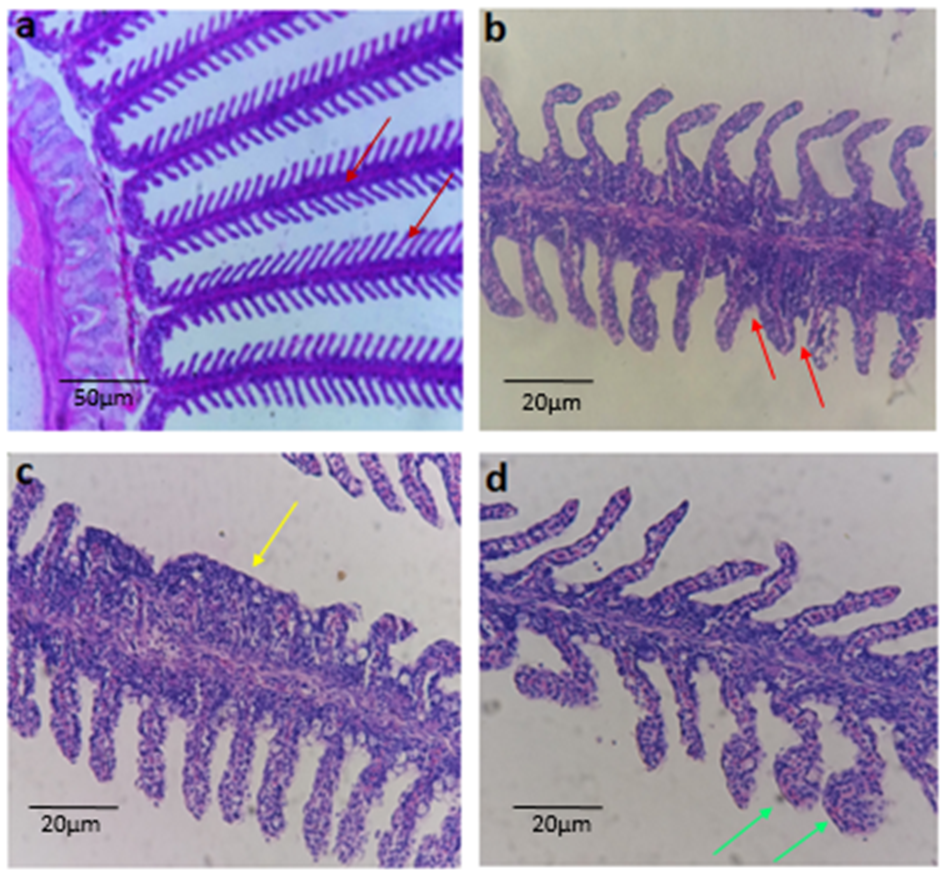Histopathological study on gills of Rhamdia quelen juveniles submitted to chronic toxicological test with ibuprofen
DOI:
https://doi.org/10.21708/avb.2020.14.4.9437Resumen
The present study aimed at evaluating histopathological changes in gills of Rhamdia quelen juveniles submitted to different concentrations of ibuprofen (0.0; 0.5; 5.0 and 50.0 mg/L); concentrations were determined from LC50 acute assays of 5.0 mg/L (120h). For each concentration four replicates were made, with four copies each. The experiment had a total duration of 120 hours in a chronic toxicological trial. After completion, the animals were euthanized, laparotomized, and the gills were localized, isolated and fixed in 10% formaldehyde, preserved in 70% alcohol and subsequently submitted to histological routine technique for paraffin inclusion. Five cuts (6µM) per specimen were made and stained with Hematoxylin and Eosin (H&E). The Average Alteration Score (AAS) and Histopathological Alteration Indices (HAI) were determined according to the degree of the lesion and then classified in stages I, II and III which produced respectively Lamellar derangement, Lamella’s epithelium rupture and aneurysm with more expressive alterations. For all concentrations the drug led to histological alterations for Rhamdia quelen, putting in evidence damages that go from moderate to severe in the gills of the analysed fishes. Ibuprofen caused branchial lesions in R. quelen with a progressive effect in high concentrations, suggesting that the presence of this drug could cause abnormalities and favour mortality in this species.
Descargas

Descargas
Publicado
Número
Sección
Licencia
Autores que publicam na Acta Veterinaria Brasilica concordam com os seguintes termos: a) Autores mantém os direitos autorais e concedem à revista o direito de primeira publicação, com o trabalho simultaneamente licenciado sob a Licença Creative Commons Attribution que permite o compartilhamento do trabalho com reconhecimento da autoria e publicação inicial nesta revista. b) Autores têm autorização para assumir contratos adicionais separadamente, para distribuição não-exclusiva da versão do trabalho publicada nesta revista (ex.: publicar em repositório institucional ou como capítulo de livro), com reconhecimento de autoria e publicação inicial nesta revista. c) Autores têm permissão e são estimulados a publicar e distribuir seu trabalho online (ex.: em repositórios institucionais ou na sua página pessoal) a qualquer ponto antes ou durante o processo editorial, já que isso pode gerar alterações produtivas, bem como aumentar o impacto e a citação do trabalho publicado (Veja O Efeito do Acesso Livre).


 Esta obra está licenciada com uma Licença
Esta obra está licenciada com uma Licença 